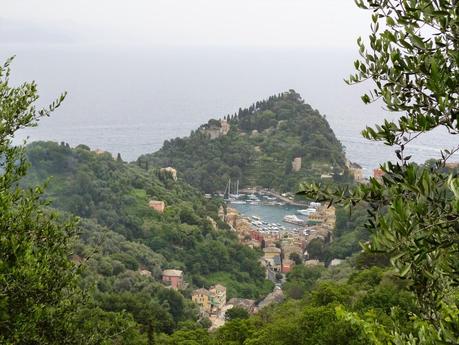“Still is the bottom of my sea: who would guess that it harbours sportive monsters.”
Thus Spoke Zarathustra, Of the Sublime Man
“He lived as he wrote… he lifted his hands and placed his feet as though this existence were a tragic drama into which he had been born to play a hero.”
Philosophy in the Tragic Age of the Greeks
In many of Nietzsche’s travels one comes across a theme of mountains reflected in deep water. While the high Alpine ridges of Sils-Maria are mirrored in the murky waters of Lake Silvaplana (see my post, In Nietzsche’s Footsteps: Sils-Maria), on this occasion it is the Mediterranean Sea that reflects the rocky face of Ligurian coast. It creates a sense of mystery and drama that attracts a traveler who must not only be an ardent walker but also an adventure seeker; someone who wants to live dangerously. The costal line spreads from La Spezia in the east to Ventimiglia to the west, with Genoa as the capital of its region. Nietzsche felt a strong affinity with Christopher Columbus, Genoa’s great and daring circumnavigator of Earth, whilst his own subterranean travels could earn him a title of the Columbus of the Unconscious.
 The promontory of Portofino, and particularly the adjacent San Fruttuoso, is as dramatic as it is mysterious and the undulated costal line never ceases to surprise.
The promontory of Portofino, and particularly the adjacent San Fruttuoso, is as dramatic as it is mysterious and the undulated costal line never ceases to surprise.Nietzsche spent the winter of 1882-3 in Rapallo where he composed Book I of Thus Spoke Zarathustra. As he walked from Zoagli, through Rapallo, Santa Margherita to Portofino, almighty thoughts were crowding in his mind. One of them was an idea of Übermensch which makes it first public appearance in the Prologue to Zarathustra, only to submerge into the underground in his subsequent writings. For Nietzsche, the idea of Übermensch was more like a vision than a concept. It suddenly surfaced in his consciousness in the wake of the ‘epiphany of Sils-Maria’. Like Eternal Return, he never explained this idea, only intimated:
“The Übermensch shall be the meaning of the earth!
I entreat you my brethren, remain true to the earth, and do not believe those who speak to you of supra-terrestrial hopes! [...]
Behold, I teach you the Übermensch: he is this lightning, he is this madness! […]
Behold, I am a prophet of the lightning and a heavy drop
from the cloud: but this lightning is called Übermensch.”
Zarathustra, Prologue
Perhaps Nietzsche himself didn’t know what he meant by Übermensch? The idea emerged as a personal symbol, and as such, Jung would argue, it eschews definition. The concept of the Self is as difficult to define as it is to define God. Indeed, in Jungian psychology, God is a Self-symbol; something infinite that cannot be described in the language of reason alone. The Self, because of its roots in the unconscious, can communicate only indirectly, through symbols, masks, irony, sounds.
If Heraclitus talked about coincidentia oppositorum (coincidence of the opposites), Nietzsche lived it. A man of passion and an advocate of Dionysian existence, he led the life of an ascetic hermit; a man of deeply religious nature he became known as one of God’s most famous assassins. In his writings, the hyperbola of his attacks only matched the sublime tone of his exaltations. Nietzsche’s tragic flaw was his urge to erect and “consecrate altars in the deepest depth of his heart”, equalled by his fervour to smash them. Two antithetical forces of his psyche – that of separation and that of the unification of opposites – seemed to have entered a truly gladiatorial agon. Living by the Heraclitean motto “all things come into being through conflict” (Fragment 8), he turned his most cherished ideals (such as Christianity) into monsters to be overcome. By ‘taking sides against himself’, he waged an almighty war against himself; his philosophy not only became “a confession on the part of the author and a kind of involuntary and unconscious memoir” (Beyond Good and Evil, 6), but a war diary! He gradually turned into a tragic mythical hero, destined for his own destruction.
In the manner of Oedipus, Nietzsche was searching for the essence of humanity that was sentenced to freedom in all its ‘existential aloneness’. As befits a tragic hero, he perished while fully conscious of the danger involved in such undertaking. His Columbus-like adventure into the unchartered territory of the human soul became a journey to the dark bottom of the sea. But he left us this Dionysian message:
“I shall return, with this sun, with this earth, with this eagle, with this serpent – not to a new life or a better life or a similar life: I shall return eternally to this identical and self-same life, in the greatest things and in the smallest, to teach once more the eternal recurrence of all things,
to speak once more the teaching of the great noon-tide of earth and man, to tell of the Übermensch once more…”
Thus Spoke Zarathustra, The Convalescent
